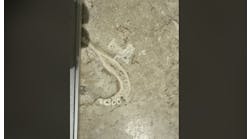The new guidelines call for an infection prevention coordinator in each dental practice.
The Centers for Disease Control and Prevention (CDC) released a new resource to assist oral health-care professionals to prevent infections in the dental office/clinic setting. This article will review the new resources.
The new resource, “Summary of Infection Prevention Practices in Dental Settings: Basic Expectations for Safe Care,” is a compilation of the CDC recommendations from the 2003 “Guidelines for Infection Control in Dental Health–Care Settings,” as well as other recommendations published in CDC guidance documents since 2003. According to the CDC, the resource includes tools to help dental health care personnel follow infection prevention guidelines. These include:
- a summary of basic infection prevention principles and recommendations for dental settings;
- a checklist to evaluate dental staff compliance with administrative and clinical practice infection prevention recommendations;
- key references and resources for each area of focus including sterilization, safe injection practices and hand hygiene in dental settings.
The resource is comprehensive and user friendly. The recommendation is that every dental practice have one person assigned to be the infection prevention coordinator. The job of the coordinator is to develop written infection prevention policies based on the evidence–based guidance in the new resource. The coordinator is the primary person to assist the others in the office so they are up to date with the equipment and supplies necessary to ensure infection prevention. The document is online at on the CDC website.
READ MORE | Infection Control Q and A: Instrument processing
Topics in the 2003 “Guidelines for Infection Control in Dental Health-Care Settings” include (1) personnel health elements of an infection control program, (2) preventing transmission of bloodborne pathogens, (3) hand hygiene, (4) personal protective equipment, (5) contact dermatitis and latex Hypersensitivity, (6) sterilization and disinfection of patient-care items, (7) environmental infection control, (8) dental unit waterlines, biofilm, and water quality, and other issues. (2) There is a 20-page check list and a “Summary of Infection Prevention Practices in Dental Settings: Basic Expectations for Safe Care.”
For more information on infection control, visit the Organization for Safety, Asepsis and Prevention (OSAP). OSAP’s mission is “To be the world’s leading provider of education that supports safe dental visits.” OSAP has a knowledge center with a variety of resources, and an Annual Conference. This year the Annual Conference is in San Diego.
Let’s do our part to keep our patients and ourselves safe!







